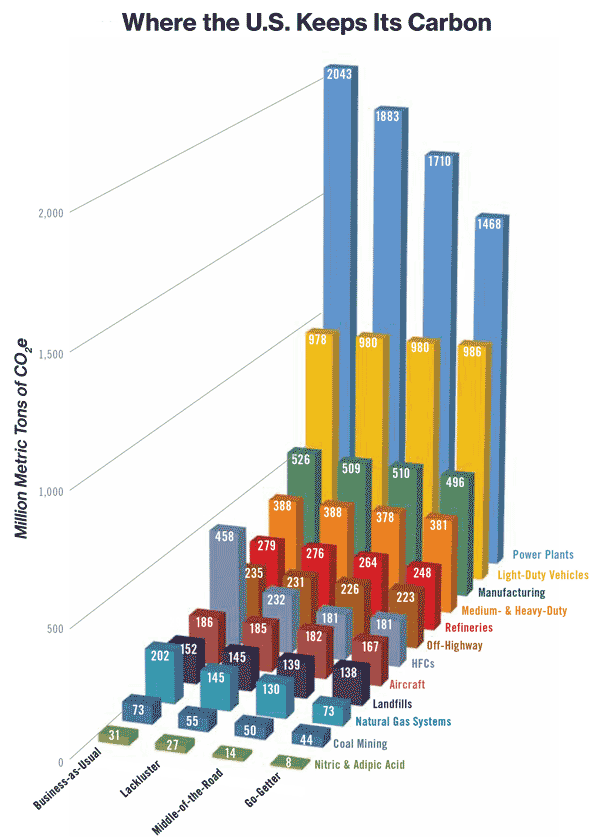Readers may have heard that the Obama administration this week sent a US plan to reduce carbon emissions to the United Nations agency in charge of its climate change program. That plans calls for the US to reduce its C02 emissions by 26-28% by 2025 versus 2005 levels.
The plan was sent as part of a process in which dozens of nations will submit their plans in coming months in preparation for the UN climate summit in Paris in December, where there is a somewhat vague commitment to hammer out some form of new global climate deal.
What that deal will look like, whether it will be legally binding or not, whether it will require Senate approval as a treaty, whether countries such as India and China buy in, and many other questions remain to be answered, however - this will be high stakes.
Related to this week's development, Bloomberg has just published the interesting graphic seen below, which illustrates where US CO2 reductions would actually come from based on one of three scenarios: a "lackluster" program, a middle of the road approach, or a "go getter" (very aggressive) CO2 reduction plan.

Source: Bloomberg
Bloomberg characterizes the Obama plan as somewhere between middle of the road and go-getter.
A couple of interesting points to us, under even the go-getter option:
• CO2 emissions from US automobiles (light duty vehicles) is actually expected to rise a bit
• There is some CO2 reduction seen from the heavy duty vehicle (truck) sector, but very modest
• Not much change is expected in the manufacturing sector either
Most of the heavy lifting, it seems, would come reductions in CO2 by power plants, SCDigest assumes largely through a continued move away from coal, as well as some move away from traditional power plants in general for electricity generation in favor of wind and solar.
Any Feedback on our Supply Chain Graphic of the Week? Let us know your thoughts at the Feedback section below.
|